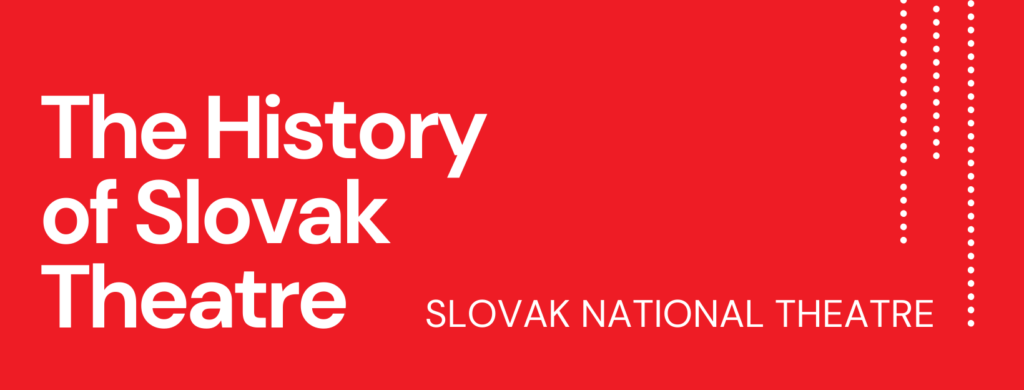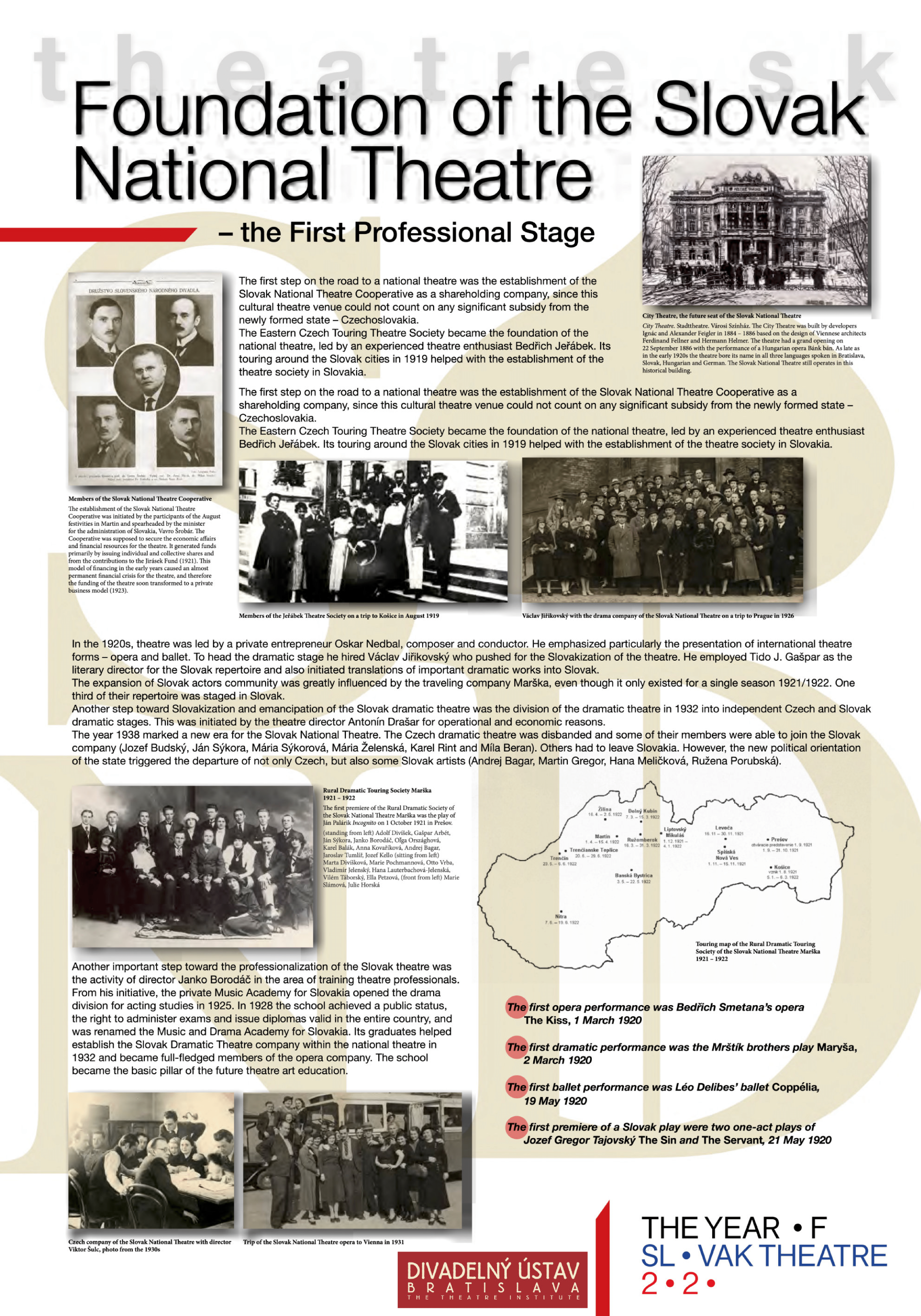
The History of Slovak Theatre – 2. Foundation of Slovak National Theatre
The first step on the road to a national theatre was the establishment of the Slovak National Theatre Cooperative as a shareholding company, since this cultural theatre venue could not count on any significant subsidy from the newly formed state – Czechoslovakia. The Eastern Czech Touring Theatre Society became the foundation of the national theatre, led by an experienced theatre enthusiast Bedřich Jeřábek. Its touring around the Slovak cities in 1919 helped with the establishment of the theatre society in Slovakia.
The first step on the road to a national theatre was the establishment of the Slovak National Theatre Cooperative as a shareholding company, since this cultural theatre venue could not count on any significant subsidy from the newly formed state – Czechoslovakia.
The Eastern Czech Touring Theatre Society became the foundation of the national theatre, led by an experienced theatre enthusiast Bedřich Jeřábek. Its touring around the Slovak cities in 1919 helped with the establishment of the theatre society in Slovakia.
In 1920s, theatre was led by a private enterpreneur Oskar Nedbal, composer and conductor. He emphasized particularly the presentation of international theatre froms – opera and ballet. To head the dramatic stage he hired Václav Jiřikovský who pushed for the Slovakization of the theatre. He employed Tido J. Gašpar as the literary director for the Slovak repertoire and also initiated translations of important dramatic works into Slovak.
The expansion of Slovak actors community was greatly influenced by the traveling company Marška, even though it only existed for a single season 1921/1922. One third of their repertoire was staged in Slovak.
Another step toward Slovakization and emancipation of the Slovak dramatic theatre was the division of the dramatic theatre in 1932 into independent Czech and Slovak dramatic staged. This was initiated by the theatre director Antonín Drašar for operational and economic reasons.
The year 1938 marked a new era for the Slovak National Theatre. The Czech dramatic theatre was disbanded and some of their members were able to join the Slovak company (Jozef Budský, Ján Sýkora, Mária Sýkorová, Mária Želenská, Karel Rint and Míla Beran). Other had to leave Slovakia. However, the new political orientation of the state triggered the departure of not only Czech, but also some Slovak artists (Andrej Bagar, Martin Gregor, Hana Meličková, Ružena Porubská).
Another important step toward the professionalization of the Slovak theatre was the activity of director Janko Borodáč in the area of training theatre professionals. From his initiative, the private Music Academy for Slovakia opened the drama division for acting studies in 1925. In 1928 the school achieved a public status, the right to administer exams and issue diplomas valid in the entire country, and was renamed the Music and Drama Academy for Slovakia. Its graduates helped establish the SLovak Dramatic Theatre company within the national theatre in 1932 and became full-fledged members of the opera company. The school became the basic pillar of the future theatre art education.
The first opera performance was Bedřich Smetana’s opera The Kiss, 1 March 1920.
The first dramatic performance was the Mrštík brothers play Maryša, 2 March 1920.
The first ballet performance was Léo Delibes’ ballet Coppélia, 19 May 1920.
The first premiere of a Slovak play were two one-act plays of Jozef Gregor Tajovský The Sin and The Servant, 21 May 1920.
This is an online version of exhibition theatre.sk.


